link to page 2 link to page 2 link to page 2 link to page 2 link to page 2 link to page 2 link to page 3 link to page 3 link to page 3 link to page 3 link to page 3 link to page 4 link to page 4 link to page 4 link to page 6 link to page 6 link to page 6 link to page 6 link to page 7 link to page 7

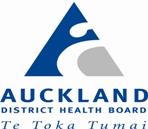







 If printed, this document is only valid for the day of printing.
If printed, this document is only valid for the day of printing.
Constipation in an Adult
Unique Identifier
CP01/BRD/133 – v03.00
Document Type
Clinical Guideline
Risk of non-compliance
may result in a small degree of harm to the patient/DHB
Function
Clinical Practice, Patient Care
User Group(s)
Auckland DHB only
Organisation(s)
Auckland District Health Board
Directorate(s)
All directorates
Department(s)
All departments
Used for which patients? Adult patients with constipation
Used by which staff?
All clinicians
Excluded
Child Health
Keywords
Bowel, laxative
Author
Nurse Consultant – Adult Community and Long Term Conditions
Authorisation
Owner
Chief Nursing Officer
Delegate / Issuer
Chief Nursing Officer
Edited by
Document Control
First issued
20 August 2014
This version issued
18 September 2020 - updated
Review frequency
3 yearly
Classification history
Reclassified from CP10/Adult/052
Contents
1. Purpose of guideline ..................................................................................................................... 2
2. Guideline management principles and goals ............................................................................... 2
3. Definitions ..................................................................................................................................... 2
4. Risk factors .................................................................................................................................... 2
Reduction in fluid intake ....................................................................................................... 2
Reduction in dietary fibre intake ........................................................................................... 2
Reduction in physical activity ................................................................................................ 3
Access to toilet facilities ........................................................................................................ 3
Medical condition .................................................................................................................. 3
Medications ........................................................................................................................... 3
5. Assessment ................................................................................................................................... 3
6. Management ................................................................................................................................ 4
Gastrocolic reflex ................................................................................................................... 4
Laxatives ................................................................................................................................ 4
7. Education for patients .................................................................................................................. 6
8. Monitoring .................................................................................................................................... 6
9. Supporting evidence ..................................................................................................................... 6
10. Associated documents .................................................................................................................. 6
11. Disclaimer ..................................................................................................................................... 7
12. Corrections and amendments ...................................................................................................... 7
Constipation-in-an-Adult_2020-09-18.docx
Page 1 of 7

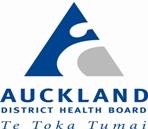

 If printed, this document is only valid for the day of printing.
If printed, this document is only valid for the day of printing.
1. Purpose of guideline
The purpose of this guideline is to facilitate the safe and effective care of an adult patient with
constipation within Auckland District Health Board (Auckland DHB).
This guideline excludes those patients with chronic constipation, spinal cord injury and those
where there is no clear diagnosis.
2. Guideline management principles and goals
Bowel management should be based on current evidence based practice and assessment should
be initiated within 24 hours.
3. Definitions
Constipation
A change in the individual’s normal bowel habits, characterised by:
A decrease in the frequency of bowel movements compared with their ambulatory baseline
The absence of sensation of complete evacuation
Reported need for increased straining with defecation.
Faecal impaction
Retention of hardened or putty-like stool in the rectum and colon, which cannot be passed by the
patient as a result of incomplete evacuation over time. Often associated with watery, loose stools
around the impacted mass.
Faecal incontinence
An involuntary passage of stool at an inappropriate place or time. This may be related to cortical
lesions, spinal cord lesions, injury to sphincter, perineal muscle relaxation, over use of laxatives,
and functional status (e.g. cognitive impairment and impaired mobility).
4. Risk factors
Reduction in fluid intake
Needing assistance to be able to drink
Dislike of available fluids e.g. is on thickened fluids
Is worried about urinary frequency and/or incontinence
Lack of knowledge about importance of fluids
Functional status e.g. cognitive or physical impairment.
Reduction in dietary fibre intake
Poor dentition, decreased saliva production, or other chewing difficulties
Available diet is low in fibre
Decreased motivation to eat
Poor memory
Constipation-in-an-Adult_2020-09-18.docx
Page 2 of 7

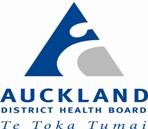



 If printed, this document is only valid for the day of printing.
If printed, this document is only valid for the day of printing.
Lack of knowledge about importance of dietary fibre or foods that contain it.
Reduction in physical activity
Increasing frailty makes activity difficult, unsafe or impossible without assistance
Sudden change in physical condition or health status
Change in environment or usual routine
Lack of knowledge about importance of regular physical activity.
Access to toilet facilities
Need help getting to toilet and/or removing clothing
Toilet seat wrong height, room too cold, lack of privacy, having to wait for others, having to
use bedpan etc.
Medical condition
The following medical conditions can slow or obstruct the passage of stool through the gut, or
makes it difficult or painful to pass stool:
Neurological deficits e.g. stroke, multiple sclerosis, Parkinson’s disease, brain/spinal cord injury
Bowel obstruction e.g. adhesions, tumour
Painful anal conditions e.g. haemorrhoids, fissures
Irritable bowel disease
Diverticulosis
Megacolon, hypotonic bowel.
Medications
Aluminium
Antihistamines
Antipsychotics (e.g. clozapine, phenothiazines)
Tricyclic antidepressants
Calcium antagonists e.g. diltiazem, verapamil
Calcium supplements
Cholestyramine
Clonidine
Diuretics
Iron
Levodopa
Opioid analgesics (including codeine)
Ondansetron.
5. Assessment
Patient assessment involves discussion about some or all of the following:
Identifying risk factors
Normal bowel pattern and history of constipation
Medication review
Constipation-in-an-Adult_2020-09-18.docx
Page 3 of 7

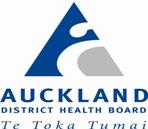

 If printed, this document is only valid for the day of printing.
If printed, this document is only valid for the day of printing.
Abdominal assessment with rectal examination (if required)
Use of a bowel chart and clear descriptions e.g. Bristol Stool Chart.
6. Management
Gastrocolic reflex
When a person smells, sees or eats food, gut mobility increases and moves food along the
digestive tract. Usually within 30 minutes following stimulation, a person feels the need to
defecate. Even if sensation is impaired due to paraplegia, defecation may still occur at this time. It
can also be effective in the confused patient.
It is therefore important in bowel management to establish regular timed defecation. Once the
urge to defecate is recognised, it should not be delayed, providing the place and time is
appropriate. If the urge to defecate is deferred it may not return for 24 hours.
The longer faeces remains in the bowel, the dryer and harder it becomes and progressively more
difficult to pass. It may take up to 4 weeks for regular timed defecation to become established.
Laxatives
Type of laxative
Use
Action and onset
Nursing points
Bulking agents
Suitable first time
Increase the volume Dose should be taken
e.g. Metamucil,
treatment for the
of the stool by
with a large glass of
Normacol,
mobile less frail
absorbing water.
water.
Psyllium
older person
The increased
Should not be given when
Often used to treat
volume stimulates
nausea, vomiting
diarrhoea secondary peristalsis.
undiagnosed abdominal
to nasogastric
pain or faecal impaction
feeding.
Onset 12-24 hours
are present.
Osmotic laxative
Lactulose is often
Lactulose syrup is
Lactulose can be mixed
e.g. Lactulose
the first choice of
poorly absorbed in
with water, milk or fruit
treatment in the frail the gastro-intestinal juice to make it more
and/or immobile
tract. It is broken
palatable.
elderly person
down in the colon by Lactulose is more
bacteria to form
effective when used
acetic and lactic
consistently.
acids. These acids
The patient on galactose
stimulate peristalsis
and/or lactose-free diets
and also exert a local may experience intestinal
osmotic effect,
obstruction.
drawing water into
Needs adequate fluid
the colon.
intake to work properly
Can cause bloating.
Onset 24 - 72 hours
e.g. Macrogols
Onset 0.5 - 3hours
Macrogols are licensed
(Molaxole)
for the treatment of
faecal impaction.
Constipation-in-an-Adult_2020-09-18.docx
Page 4 of 7

 If printed, this document is only valid for the day of printing.
If printed, this document is only valid for the day of printing.
Type of laxative
Use
Action and onset
Nursing points
Macrogols appear to be
at least as effective as
lactulose and may cause
less flatulence.
Faecal softeners
Lowers surface
Often combined with
e.g. Docusate
tension and allows
stimulants (such as senna
sodium
water to penetrate
in Laxsol tablets).
hard, dry faeces.
Stool softeners are
Also has some
unnecessary if stool is
stimulant activity
well hydrated and soft.
Oral docusate should be
Onset 6-12 hours
avoided in a patient with
intestinal obstruction.
Glycerine
Is a useful
Exert a local osmotic Suppositories should be
suppositories
immediate option in effect, drawing
inserted pointed end
the frail elderly
water into the
first.
person
rectum/lower colon. Administer 1 - 2
Increasing the
suppositories as required
pressure within the
and hold for at least 20
bowel which
minutes.
stimulates
Should not be given if
peristalsis, resulting
patient is experiencing
in a bowel motion.
nausea, vomiting,
undiagnosed abdominal
Onset 5-30 minutes
pain or faecal impaction.
Enemas
Retains water in the
Contraindications –
Hyper osmolar
intestinal lumen by
nausea, vomiting,
e.g. Phosphate
osmosis, which
abdominal pain and/or
(fleet enemas)
results in increased
rectal bleeding
bulk and stimulates
Use with caution in a
peristalsis.
patient who has renal
impairment and/or bowel
Onset 2-30 minutes
stasis.
Only use Fleet enemas on
PRN basis.
Microlax®
Faecal softener,
which liberates the
water that is
present. This causes
a softening of the
stool and leads to a
gentle defecation
Constipation-in-an-Adult_2020-09-18.docx
Page 5 of 7

 If printed, this document is only valid for the day of printing.
If printed, this document is only valid for the day of printing.
Type of laxative
Use
Action and onset
Nursing points
(also contains
glycerol which
stimulates
peristalsis).
7. Education for patients
Education to the patient and/or support person should include some or all of the following:
A healthy bowel pattern
The causes of constipation
A well balanced diet, including adequate fibre and fluid
Appropriate physical activity
Optimising the gastro-colic reflex
Use of natural laxatives or medications
Providing the constipation hand-out prepared by Nutrition Services.
8. Monitoring
All practitioners should monitor and review patient’s bowel status daily, and stop laxatives when
appropriate.
All nursing staff should monitor, record, review patient’s bowel status during every shift, and
notify the medical practitioner overseeing the patient’s care if loose stools are observed or the
patient has still not moved their bowels.
9. Supporting evidence
Allen-Dicker, J., Goldman, J. & Shah, B. (2015) Inpatient Constipation.
Hospital Medicines
Clinics 4(1) 51-64.
Gallegos-Orozco, J., Foxx-Orenstein, A., Sterler, S. & Stoa, J. (2012) Chronic Constipation in the
Elderly.
Am J Gastroenterol 107, 18–25.
Vasanwala, F. (2009) Management of Chronic Constipation in the Elderly.
The Singapore Family
Physician 35(3) 87-92.
10. Associated documents
Bristol stool chart
Constipation in Palliative Care - Adult
Constipation in the Antenatal Patient
Constipation-in-an-Adult_2020-09-18.docx
Page 6 of 7

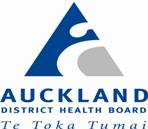 If printed, this document is only valid for the day of printing.
If printed, this document is only valid for the day of printing.
Medications - Administration
Medications - Allergies & Adverse Drug Reactions (ADRs) Identification, Documentation &
Recording
Medications - Prescribing
Clinical forms
CR5504: Bowel Motion Chart
CR5775: Bowel Chart Older People’s Health
Patient information leaflets
The following leaflets can be printed from the Auckland DHB intranet / Nutritional Services /
Nutrition information sheets.
Constipation
Fibre in your diet
11. Disclaimer
No guideline can cover all variations required for specific circumstances. It is the responsibility of
the health care practitioners using this Auckland DHB guideline to adapt it for safe use within their
own institution, recognise the need for specialist help, and call for it without delay, when an
individual patient falls outside of the boundaries of this guideline.
12. Corrections and amendments
The next scheduled review of this document is as per the document classification table (page 1).
However, if the reader notices any errors or believes that the document should be reviewed
before the scheduled date, they should contact the owner or
Document Control without delay.
Constipation-in-an-Adult_2020-09-18.docx
Page 7 of 7





























